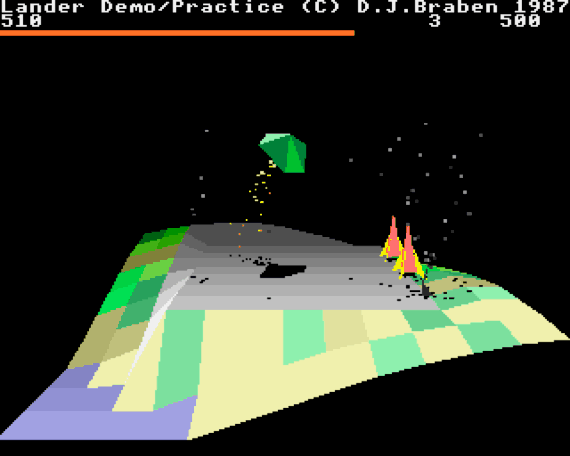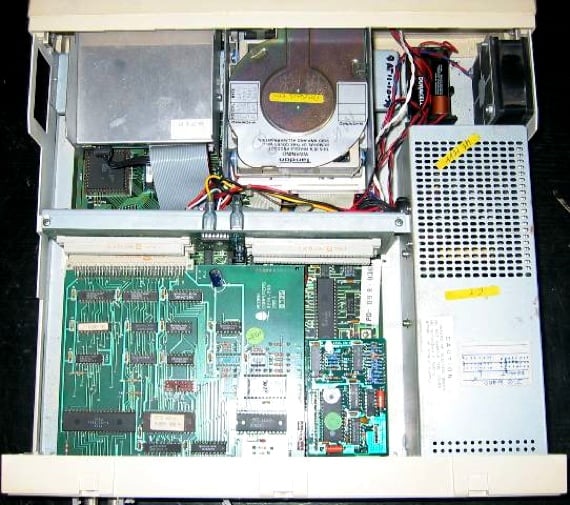This article is more than 1 year old
Strong ARM: The Acorn Archimedes is 25
The first ARM computer
Strong ARM
Powering the A305 and the other Archimedes was the 32-bit ARM Risc (Reduced Instruction Set Computing) chip, developed by Acorn as the replacement for the 6502 processor it had implemented in its Atom, BBC and Electron micros during the early 1980s.
Such was the power of the ARM, wrote Pountain, that the Archimedes' software sprites could bounce around the screen as smoothly as the hardware-managed sprites offered by the likes of the Amiga and Commodore 64.

From the Archimedes demo disk: David Braben's Lander... later known as Zarch
The Acorns shipped with a demo game written by David Elite Braben simply called Game 1 – it was also labelled Lander and was the foundation for Braben's Zarch game. You flew polygon-built ship over a 3D landscape, complete with real physics and particle effects. "Astonishing," Pountain called it.
"Nothing," he wrote, "could better illustrate the way a quantitative jump in processing power can lead to a quantitative step in applications. You just can't do this stuff on an [Intel] 8088, and it's doubtful on a [Motorola] 68000: the hefty calculations of landscape perspective and particle motion for each scene need to be performed in less than the screen refresh period or the illusion collapses."
Graphics
Here, though, the illusion was maintained, all thanks to the power of the ARM. It contained 27 32-bit registers and could handle 44 instructions, the majority of which excuted in a single clock cycle. The CPU ran at 8MHz. It was attached to separate memory, video and I/O controllers, all designed by Acorn. The I/O chip was codenamed 'Albion'.
The VIDC – codenamed 'Arabella' and designed, like the other ARM auxiliary chips, by Tudor Brown, Mike Muller and others – supported colour resolutions of up to 640 x 512 – 16 colours; if you wanted 256, you had to drop to 640 x 256 – but could reach 1024 x 1024 if you were happy to adopt a single colour. It also handled sound output.
Novelly, the MEMC memory controller – 'Anna' – was able to support 32MB of memory – far more than it was economically feasible to add, so it was able to page the 4MB of physical Ram on and off a hard drive to provide rudimentary virtual memory, something we take for granted today. Ditto the application memory protection, a feature modern multitasking operating systems manage for their users.
Back then, the Archimedes' OS was called Arthur, only renamed RiscOS the following year, allegedly to avoid confusion with the movie Arthur 2: On the Rocks, also released in 1988, though this seems very unlikely.
Arthur is said to have stood for "A Risc operating system before THURsday".

